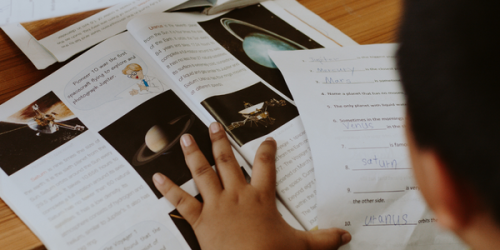The NAEP results are in and little has changed. Nearly a third of fourth grade students are still “below basic” readers.
Reading drives nearly everything in schools. Children who never become capable readers struggle in every subject. Studies have found that a high percent of errors on math tests result from students’ difficulties in reading comprehension, not math, with students unable to translate word problems into numbers and mathematical operations. Reading isn’t just about making the grade either — twenty-five percent of adults lack the basic literacy skills required in a typical job.
So with decades of research that have shown the number of children struggling to read can be cut by two-thirds or more if the methods used to teach them to read are scientifically based, why aren’t teachers using these proven models?
The root cause is that too many teacher prep programs continue to ignore the science. Neuroscientists, psychologists, and reading experts all agree on the methods that will result in the most children becoming successful readers. The National Reading Panel established scientifically-supported reading methods in its 2000 research report, which has been affirmed most recently by the Institute of Education Sciences’ What Works Clearinghouse in 2016. Still, most teacher preparation programs reject the evidence.
Certainly elementary schools share some of the responsibility when a substandard reading curriculum is prioritized over better options, but the individuals making those decisions are most often products of teacher prep programs themselves.
When NCTQ first examined this issue in 2006, only 15 percent of programs were found to teach the five key components of early reading instruction. At the undergraduate level, that has improved dramatically — nearly three fold. At the graduate level, however, the progress is only incremental. Still, only 23 percent of graduate programs teach these strategies.
This issue isn’t limited to reading either. A strong understanding of mathematics expands college and career opportunities. In order to understand the higher order math concepts correlated with increased earning potential, children must first learn the fundamentals.
While seemingly simple, teaching elementary arithmetic — dividing fractions, operations with signed numbers, and basic probability — requires a deep understanding of the underlying mathematics. Elementary teachers need to know more than basic rules such as “invert and multiply,” they must be able to explain why rules work.
To accomplish this, aspiring teachers need specialized training in mathematics that takes a deep, conceptual approach to the content. Typical college-level math courses (such as calculus) do not address this need. Teacher preparation programs must provide this instruction, but few answer the call. In our initial review of mathematics preparation back in 2008, only five percent of programs provided adequate training. Our 2016 review of undergraduate programs found some improvement, climbing to 13 percent, but given the starting point, progress is not coming fast enough.
When considering that teachers aren’t given the tools to improve reading and math performance, is it really a surprise that NAEP scores haven’t changed in 10 years?
More like this

Gambling with children’s futures—and no one’s tracking whether we win or lose

Teacher prep matters; let’s start acting like it

Teacher Prep Review: Building Content Knowledge


